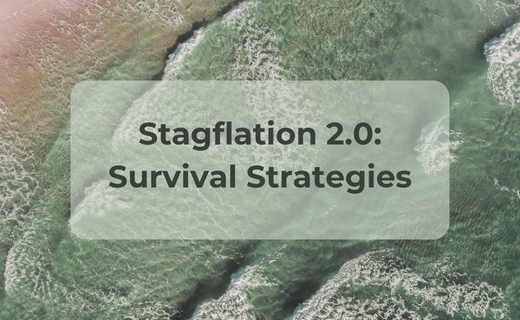Introduction
Having the ability to engage in strategic planning is becoming essential in a time of rapid technological advancement, climate change, and geopolitical unrest. Companies that previously prospered by depending on historical data and past performance now have to contend with an unpredictable environment. Because of this, traditional strategic planning models frequently fail to foresee new risks and take advantage of emerging opportunities.
Strategic planning, in today’s context, must extend beyond the confines of routine forecasting. It must account for a wide spectrum of potential futures. This is where futurology becomes indispensable. As a discipline, futurology enables businesses to explore what might happen, rather than simply react to what has already occurred. By integrating futurology into strategic planning processes, European businesses can develop forward-looking strategies that prepare them for uncertainty and equip them to thrive in dynamic environments.
This article explores how strategic planning and futurology intersect. It highlights recent trends, examines statistical insights, and outlines practical implications for organisations across the European economic landscape. Along the way, it demonstrates how businesses can improve resilience, foster innovation, and deliver long-term value through foresight-driven planning.
The Evolution of Strategic Planning in the 21st Century
The environment in which businesses operate has changed dramatically. Digital disruption, global health crises, environmental degradation, and shifting social expectations have accelerated the pace of change. In response, the strategic planning process must become more agile, data-informed, and scenario-based.
Strategic planning is no longer about simply projecting next quarter’s sales or forecasting incremental growth. It involves setting a clear vision for the future, anticipating risks, and aligning internal capabilities with external realities. For example, businesses now need to plan not only for market demand but also for digital infrastructure readiness, supply chain vulnerabilities, and stakeholder expectations.
Transitioning to this type of forward-looking strategy involves multiple components. First, companies must build the capacity to collect and interpret weak signals—subtle indicators of potential change. Second, they need to involve cross-functional teams in the planning process. This encourages diverse perspectives, which enhances the ability to identify future challenges. Third, organisations must commit to regular strategic reviews. These reviews should incorporate real-time data and scenario analysis.
Why Strategic Planning Must Include Futurology
Futurology, or foresight, is the practice of exploring potential future scenarios to inform present-day decisions. It incorporates methodologies such as scenario planning, horizon scanning, the Delphi method, and systems mapping. While some of these tools have been around for decades, their value in today’s fast-moving environment has grown significantly.
Futurology enhances strategic planning in several ways. First, it shifts the focus from static predictions to dynamic exploration. Instead of preparing for a single projected outcome, businesses prepare for a range of plausible futures. This widens the decision-making lens.
Second, futurology encourages long-term thinking. In a corporate culture often dominated by short-termism, futurology helps leaders consider implications that may unfold over five, ten, or even twenty years. For example, anticipating generational shifts in values can influence how companies invest in sustainability or social governance.
Finally, integrating futurology helps businesses recognise interdependencies. Economic, social, and environmental systems are increasingly interconnected. A policy change in one country can ripple across industries worldwide. Futurology-based planning captures this complexity and equips companies to respond accordingly.
Key Trends in Futurology-Driven Strategic Planning
Scenario Planning Gains Momentum
A growing number of organisations are turning to scenario planning. A 2023 Deloitte study revealed that 67% of European companies now actively use scenario planning in their strategic frameworks. This method involves constructing multiple detailed and plausible future scenarios, each with distinct implications for the business.
For example, a retail company may develop three scenarios: one where digital commerce dominates, another where in-store experiences resurge, and a third involving hybrid shopping behaviours. By evaluating the risks and opportunities of each, companies can formulate more robust strategies.
Scenario planning also helps uncover blind spots. It forces leadership teams to consider disruptive events, like climate-induced migration or AI-powered automation, that may not be part of their current planning assumptions. As a result, scenario planning is becoming a cornerstone of future-ready strategic planning.
Innovation as an Outcome of Strategic Foresight
Innovation often springs from looking ahead. According to a 2024 European Commission report, companies that integrate futurological techniques are 23% more likely to develop new products or services. This is because futurology helps identify unmet needs, technology gaps, and behavioural shifts before they become mainstream.
For instance, organisations tracking trends in urbanisation and ageing populations may innovate in areas like smart housing or elder-care robotics. These innovations do not emerge by chance—they are rooted in a deliberate effort to anticipate the future.
Futurology also nurtures a culture of experimentation. Teams are encouraged to prototype, test hypotheses, and adapt quickly. This mindset enables innovation beyond the R&D department. Marketing, operations, and customer service teams also participate in shaping the future.
The Role of Big Data in Strategic Forecasting
Data and foresight are powerful allies. McKinsey’s 2023 research shows that companies combining big data with futurological insight achieve 18% higher forecast accuracy. While big data provides quantitative trends, futurology adds qualitative understanding.
For example, analytics might reveal declining car ownership among urban youth. Futurology could explain the broader shift—perhaps values are changing, or alternative mobility options are gaining traction. This layered analysis strengthens decision-making.
Moreover, data-driven foresight enhances the timeliness of strategic planning. As real-time data becomes available, companies can adjust forecasts and plans accordingly. This agility enables them to seize new opportunities and avoid emerging threats.
Strategic Planning for Organisational Agility
Adaptability is the hallmark of resilient organisations. A 2024 Ernst & Young survey found that 71% of European executives view futurology as essential to adaptability. By integrating strategic foresight, companies gain the tools to respond quickly to disruption.
Agile strategic planning means creating flexible frameworks rather than rigid roadmaps. For example, companies might set broad objectives while leaving room for tactical adjustment. This approach is especially valuable in volatile sectors such as energy, finance, and transport.
Furthermore, agile planning includes trigger points—signals that indicate when a strategy needs adjustment. These could include economic indicators, policy changes, or shifts in public sentiment. As a result, companies can pivot with greater confidence and coordination.
Institutional Investment in Foresight Capabilities
Strategic planning increasingly includes dedicated foresight functions. KPMG’s 2023 report noted a 15% increase in companies establishing internal futurology departments. Some also partner with universities, think tanks, or innovation labs.
These investments reflect a maturing perspective on planning. Rather than treating foresight as an ad-hoc activity, leading companies are embedding it into governance structures. For example, foresight specialists may report directly to the executive team or participate in strategic review committees.
This institutionalisation ensures continuity. It also promotes foresight as a shared responsibility across the organisation.
Underlying Drivers of Strategic Planning Transformation
What explains the growing shift toward futurology-informed planning? Several interrelated factors are at play:
- Market Volatility: Economic instability, shifting trade patterns, and inflation trends increase uncertainty.
- Technological Acceleration: Emerging technologies, such as AI and blockchain, disrupt existing models.
- Social Transformation: Changing demographics, labour expectations, and lifestyle values influence demand.
- Environmental Imperatives: Climate risks, carbon regulation, and sustainability concerns require proactive strategies.
- Global Interdependence: Supply chains and financial systems are increasingly interconnected, magnifying risks.
These drivers make traditional strategic planning insufficient. A more flexible, foresight-oriented approach is essential for resilience and relevance.
Strategic Planning Outcomes: Organisational Benefits
Improved Risk Management
By anticipating disruptions, companies are better equipped to respond. For example, a manufacturer might diversify suppliers in response to potential geopolitical tensions. This reduces the risk of operational bottlenecks.
Smarter Investment Decisions
Foresight helps organisations align investments with long-term value. It avoids sunk costs in outdated technologies or markets. Instead, businesses can prioritise future growth areas.
Enhanced Innovation Culture
A forward-looking strategy promotes a mindset of curiosity and continuous improvement. It empowers employees to explore new ideas and validate them through scenario analysis.
Stakeholder Confidence
Transparent and visionary planning fosters trust among customers, investors, and employees. When stakeholders see that a business is preparing for future challenges, they are more likely to support its direction.
Long-Term Sustainability
Foresight-driven strategic planning supports goals like net-zero transitions, inclusive employment, and circular economies. These are no longer peripheral issues—they are central to long-term competitiveness.
Future Market Projections: Strategic Themes for Europe
The Digital Economy Will Deepen
Europe’s economic future is digital. Businesses must invest in AI, cloud systems, and cybersecurity. Strategic planning should prioritise digital transformation and workforce upskilling.
A Green Transition Will Reshape Markets
Sustainability goals are accelerating. Strategic planners must prepare for carbon pricing, environmental compliance, and green innovation. For example, sectors like construction, transport, and agriculture face rising pressure to decarbonise.
Demographic Shifts Will Alter Consumer Profiles
Europe is ageing. Migration is increasing. These changes affect everything from healthcare demand to housing design. Strategic planning must reflect demographic intelligence.
Localisation Will Counter Global Shocks
The pandemic and geopolitical tensions exposed global supply chain vulnerabilities. As a result, businesses may adopt regionalisation strategies. Futurology helps test these approaches through scenario modelling.
Ethics and Data Governance Will Gain Priority
Trust is becoming a market differentiator. Strategic planning must address data ethics, AI bias, and transparency. Regulation is tightening. Companies that get ahead will avoid costly compliance issues later.
Our expert guidance in business forecasting will help you mitigate threats and transform external challenges into strategic opportunities. [Contact Us]
Conclusion: Foresight as a Strategic Mandate
Strategic planning is transforming. It’s no longer just a spreadsheet exercise. It’s a leadership imperative grounded in foresight, adaptability, and purpose.
European companies that embrace futurology position themselves for success in an uncertain world. They are more resilient, innovative, and aligned with future market realities. The evidence is clear: scenario planning, data integration, and long-term thinking lead to better outcomes.
The future belongs to those who prepare for it. Strategic planning through futurology is how businesses can shape that future, rather than be shaped by it.





